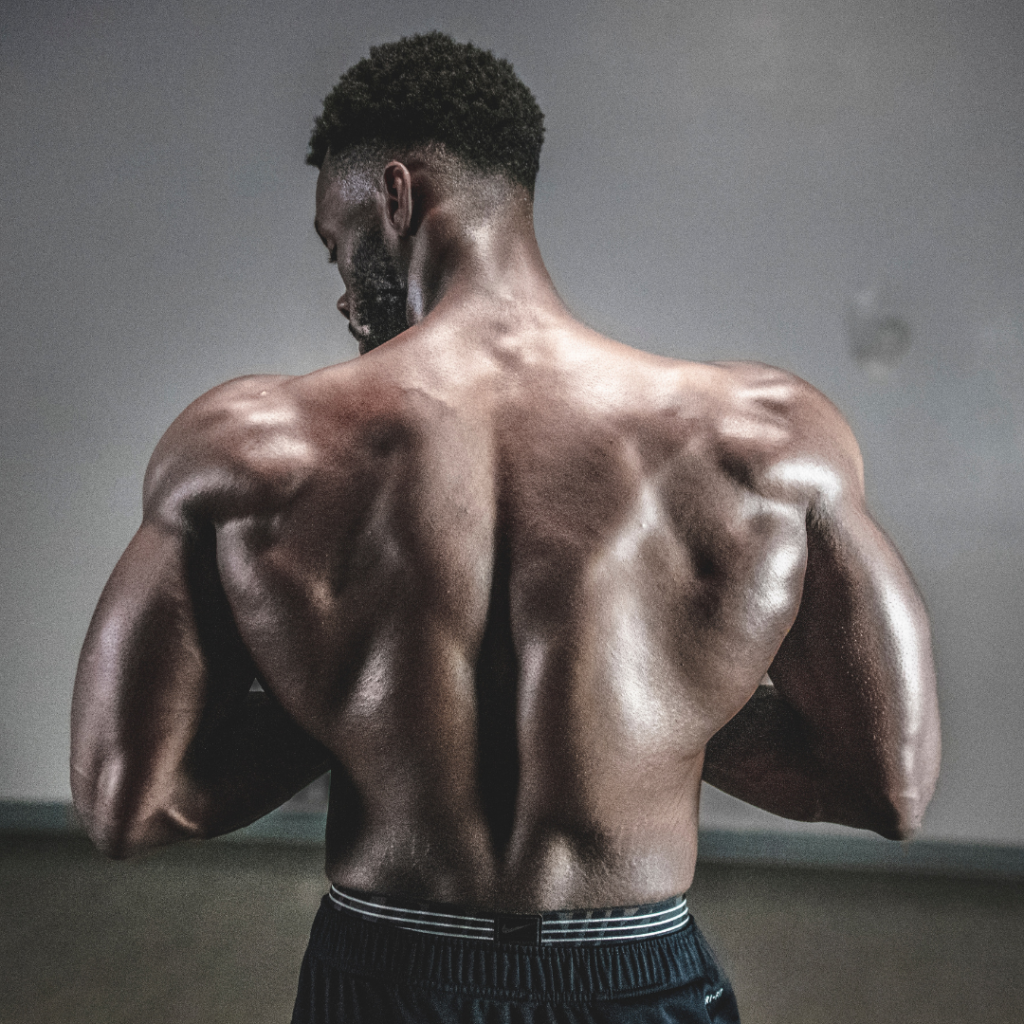As the weather heats up, it’s time to get serious about cutting for summer. Summer is quickly approaching and you may be wondering when to start cutting for summer.
To make sure you don’t miss out on those beach days with friends or family, we’ve compiled an easy-to-follow guide that will teach you exactly when to start cutting—plus some essential tips so you’re ready in no time!
Whether you are aiming for a specific goal or just want to look great at the pool this year, this article is your new go-to for reaching all of your body goals.
What Does “Cutting” Mean?
At its core, cutting is when you decrease your caloric intake to achieve a desired body composition.
It’s when you start eating less calories than what you’re burning while exercising (but not so little that it puts your health at risk).
By doing this, your body will start to use up stored fat as fuel and reduce the amount of fat in your body.
The Difference Between Cutting And Bulking
The difference between the two is very simple: when cutting, you’re in a caloric deficit and when bulking, you’re in a caloric surplus.
Calorie Deficit
A calorie deficit is a concept that’s simple in theory but takes some effort to implement.
By definition, it’s when an individual consumes fewer calories than their body needs to maintain its current weight.
The calorie deficit can be created through a combination of calorie-restriction and increased physical activity, both of which help the body to burn off stored fat in order to make up for the calorie shortage.
It’s a powerful tool for weight-loss as well as sustainable weight management over time.
Calorie Surplus
A calorie surplus is a scientifically-proven term to describe a situation where you are consuming more calories than you are using.
In contrast, calorie deficit is when you burn more energy than what you consume.
Now, calorie surplus does not mean eating whatever, whenever – in other words, it’s not always about that second slice of pizza or an extra spoonful of ice cream!
Actually, calorie surplus may also be achieved with an appropriate higher calorie diet consisting of nutritionally-dense foods to aid in muscle growth and drive weight loss from body fat.
Here’s a short video from Athlean-X explaining bulking and cutting!
How Do You Properly Cut?
Going into a cutting phase can easily be an intimidating experience; however, it doesn’t have to be.
With some savvy planning and knowledge of the science behind it, anyone can successfully transition into a healthy cutting routine.
The key to cutting properly is keeping calorie intake in check while still managing to consume enough essential nutrients.
Make sure you stay within 10-20% of your Maintenance and depending on how comfortable and sustainable that feels, adjust it accordingly.
When To Start Cutting For Summer

The general rule of thumb is to begin your cut 8-12 weeks before summer officially begins. This will give your body ample time to adjust and get the most out of your cutting phase.
You should also keep in mind the amount of weight you are trying to lose or gain when planning when to start cutting.
Make sure that you adjust your diet and fitness regimen accordingly so that you can reach your goals safely and sustainably.
Different Cutting Techniques
There are different ways to approach and structure your cutting routine.
The most popular method is slow cutting, where you gradually decrease your calories over time in order to give your body a chance to adjust.
Another technique is carb cycling, where you rotate between high and low-carb days to give your body its ideal fuel in order to maximize fat burning.
Finally, flexible dieting is when you count macronutrients and mix up your diet with different sources of food to provide the most adequate nutrition.
How Long Should The Cutting Phase Be?
The amount of fat you want to lose along with your body composition will determine how much time it takes.
It’s essential that you take things slowly and avoid any muscle loss, so by no means rush the process!
To make sure you get the perfect cut, here are a few suggested timeline options for you to follow:
- Moderate Cut: You should expect to be in the cutting phase for 8-12 weeks and aim to lose 1-3 pounds each week.
- Aggressive Cut: You should expect to be in the cutting phase for 12-16 weeks and aim to lose 4-7 pounds each week.
- Lifestyle Cut: You should expect to be in the cutting phase for 16-20 weeks and aim to lose 1-2 pounds each week.
To achieve weight-loss goals, there is a widely accepted formula to follow; lose 1 pound per week. This approach can help you reach your fitness objectives quickly and efficiently.
Do You Lose Muscle While Cutting?
This is a common fear when it comes to cutting. The answer is yes, when done improperly.
Cutting requires some meticulous planning when it comes to your nutrition and fitness regimen; when done right, you can actually keep muscle while reducing fat.
Keeping a moderate caloric deficit when cutting and consuming enough protein, essential fats, and micronutrients will help you preserve muscle mass while still being able to reduce fat.
How Do You Cut Without Losing Muscle
- Advance steadily with your diet program, and don’t stress over every calorie consumed.
- Avoid overdoing cardio workouts and focus on building strength through weight training and maintaining a healthy diet.
- Unlock your fitness potential with HIIT (High-Intensity Interval Training), the ultimate tool for achieving a lean physique.
- To avoid harming your body, it’s important to not drastically reduce the amount of calories you consume and make sure that you get enough nutrients every day.
Can You Gain Muscle While Cutting?

Yes! It is possible to gain muscle while cutting, but it requires a specific ratio when it comes to your diet and exercise routine.
In order to gain muscle while on a cutting diet, there are some essential tips people should keep in mind:
- Focus your diet on protein-rich foods. This means eating lean meats like chicken, fish, and turkey as well as plant-based proteins like legumes, tofu, and tempeh. Eating a high-protein diet can help promote muscle growth and maintenance during the weight loss process. Additionally, it is important to include carbohydrates in your meals in order to provide energy for workouts and promote overall health. Complex carbohydrates such as quinoa, sweet potatoes, oats, and brown rice are great sources of energy that will help you stay energized while cutting calories.
- Your exercise routine should be tailored towards gaining muscle while still losing weight. It is recommended to do both resistance training exercises (such as strength training or bodyweight exercises) as well as cardio exercises (like running or cycling) several times a week. Resistance training can help build lean muscle mass while also burning fat in the process. Cardio can help burn additional calories for further weight loss without compromising muscular gains you make from strength training.
- Make sure you’re getting enough restful sleep each night in order to support optimal recovery from workouts and maintain good mental health during the cutting process. Aim for 7-9 hours of quality sleep every night for best results when it comes to building lean muscle and staying motivated throughout the weight loss journey.
Can You Retain Muscle While Cutting?
Yes! Retaining muscle when cutting is possible, but it takes some dedication and hard work.
When it comes to retaining muscle when cutting, it’s important to focus on both diet and exercise. It’s essential that you consume enough protein when cutting, as well as monitor your calorie intake.
Eating too few calories can lead to muscle loss when cutting, so it’s important to make sure that your calorie deficit is moderate in order to avoid muscle wasting.
On the exercise side of things, weight training is essential when it comes to retaining muscle when cutting.
It’s important to do compound movements when weight training, as well as make sure that you are challenging yourself in the gym.
Make sure to keep up with cardio exercises when cutting in order to burn more calories and keep your metabolism active.
The Best Diet While Cutting
The best diet when cutting should include a balance of macronutrients such as carbohydrates, fats, and proteins.
When it comes to macronutrient sources, focus on eating a variety of whole grains, legumes, nuts and seeds, fruits, vegetables, and lean meats like fish and poultry.
It’s also important to make sure you are consuming enough healthy fats such as those found in avocados, olive oil, nuts and seeds, and fatty fish.
Additionally, make sure to stay hydrated while cutting by drinking plenty of water throughout the day.
Should I Take Supplements?
Yes, when cutting you should include supplements in your diet.
Whey protein can help promote muscle growth when combined with exercise and a healthy diet.
BCAA’s (branched-chain amino acids) are great for muscle preservation when calories are restricted.
Creatine is another supplement that can help promote muscle growth when combined with a healthy diet and exercise routine.
Cutting Tips
Now that you’ve learned more about cutting, here are some tips to help when you’re ready to start:
- Start cutting for summer when temperatures start to rise and you want to show off your body
- Monitor your calorie intake when cutting, making sure that you are eating enough to support muscle growth but not too much to stall weight loss
- Make sure to include protein in every meal when cutting, as it is essential for building and maintaining lean muscle
- Include complex carbohydrates in your diet when cutting, as they provide energy for workouts and promote overall health
- Incorporate both resistance training exercises and cardio when cutting, as they can help support muscle growth and fat loss simultaneously
- Make sure you are getting enough restful sleep when cutting, aiming for 7-9 hours of quality sleep every night
- Include supplements when cutting, as they can help promote muscle growth when combined with exercise and a healthy diet.
- Stay focused on your goals when cutting and remain consistent with your diet and exercise routine for best results.
FAQ’s
When should I start the cutting phase? The best time to start a cutting phase is when the weather starts to warm up and you want to show off your body.
Can you get cut in 3 months? Yes, it is possible to get cut in 3 months with a consistent diet and exercise routine.
How many calories should I eat when cutting? When cutting, it’s important to monitor your calorie intake and make sure that you are not eating too few calories. A moderate calorie deficit of around 500-1000 calories below maintenance is a good place to start.
What type of exercise should I do when cutting? When cutting, it’s important to do both resistance training exercises and cardio in order to burn fat and build lean muscle. Weight training should focus on compound movements, while incorporating HIIT and other forms of cardio can help keep your metabolism active.
